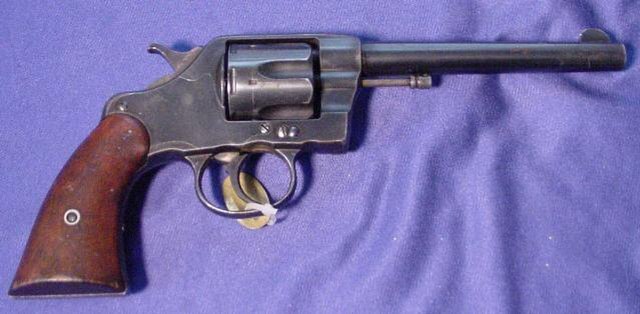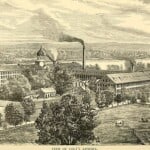
M1892
In the vast world of firearms, a standout piece is the M1892 Revolver, or as it is more formally known, the Colt Model 1892 New Army & Navy Revolver. This firearm not only proved its mettle in battle but also paved the way for the modernization of military sidearms. A close examination of the M1892 Revolver offers insights into the past of firearm technology and how it shaped the course of military engagements.
Development and Predecessors
The M1892 Revolver was a product of the United States' quest for a reliable and efficient sidearm for its armed forces. The .38 Long Colt cartridge used in the M1892 was initially developed for use in the Colt M1877 "Lightning" revolver. However, the Lightning was a commercial failure due to its delicate mechanism and relatively weak cartridge, which led to the development of the M1892.
The M1892 Revolver was primarily designed by one of the most eminent firearm designers of the time, William Mason. Mason, who worked for Colt, had previously contributed to the development of several iconic firearms, such as the Colt Single Action Army Revolver. The M1892 was a significant improvement over its predecessor, the Colt Model 1889, marking the transition from single action to double action revolvers for the U.S. military.
Manufacture and Companies
The manufacturing of the M1892 Revolver was carried out by Colt's Patent Fire Arms Manufacturing Company in Hartford, Connecticut. The Colt Company, founded by the legendary Samuel Colt in 1855, was a leading name in the firearm industry at the time, with a reputation for producing high-quality and reliable firearms.
The Colt Company had exclusive rights for the manufacture of the M1892, producing a total of approximately 291,000 units between 1892 and 1907. The revolvers were primarily produced for the U.S. military, but some were also sold on the civilian market.
Technical Specifications and Cartridge Performance
The M1892 was a double-action, six-shot revolver with a swing-out cylinder - a departure from the traditional loading gate and ejector rod design. It was chambered in .38 Long Colt and featured a 6-inch barrel, though 4.5-inch and 3-inch variants were later introduced.
The .38 Long Colt cartridge that the M1892 Revolver fired was a smokeless powder round. It had a muzzle velocity of approximately 770 feet per second (fps) and could generate about 200 foot-pounds (ft·lb) of energy. The cartridge was rather underpowered by modern standards and was later criticized for its lackluster performance during the Philippine-American War at the turn of the 20th century.
Usage
The M1892 was first introduced to the U.S. Army and Navy in 1892, making it the first standard-issue double-action revolver. It was used in various conflicts, including the Spanish-American War, the Philippine-American War, and the Boxer Rebellion. The M1892 saw service until it was officially replaced by the M1911 semi-automatic pistol in .45 ACP, though many units continued to use the M1892 well into the 20th century due to supply issues.
Outside the U.S., the M1892 saw limited adoption. It was reportedly used by some officers in the British and French armies during World War I, but this was more due to personal preference than standard issue.
Comparisons with Contemporary Firearms
During the M1892 Revolver's period of usage, several other sidearms were in use by the U.S and its allies and enemies. The British Webley Mk IV in .455 Webley and the French Modele 1892 revolver were standard issue sidearms for the respective nations during this period. The Webley Mk IV was similar to the M1892 in terms of operation but fired a larger and more powerful cartridge, while the French Modele 1892 was a smaller caliber weapon with similar performance to the .38 Long Colt.
In the U.S., the Smith & Wesson .38 Hand Ejector Model of 1899, a revolver very similar to the M1892, was also used by some units. However, the .38 Hand Ejector Model fired the newer and more powerful .38 Special cartridge, which eventually superseded the .38 Long Colt.
Conclusion
The M1892 Revolver, despite its criticisms, holds a prominent place in the annals of firearm history. As the first double-action revolver to be issued to the U.S. military, it marked a significant advancement in the design and functionality of military sidearms. While its performance may have been overshadowed by its contemporaries and successors, the influence and legacy of the M1892 are undeniable.
The Colt Company's commitment to innovation, coupled with the genius of William Mason, gave birth to a firearm that served the U.S. military in several major conflicts. The M1892 may not be remembered as the most powerful or successful military sidearm, but its contributions to the evolution of firearms technology make it a critical piece of history. Today, it remains a coveted piece for collectors and firearm enthusiasts, a testament to its historical importance and enduring appeal.
Discussions on Colt revolvers can be found here.
If you know of any forums or sites that should be referenced on this listing, please let us know here.



